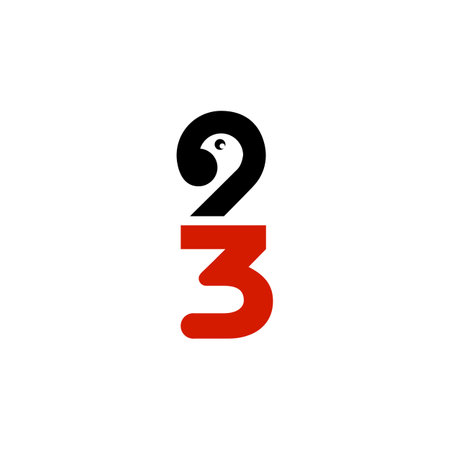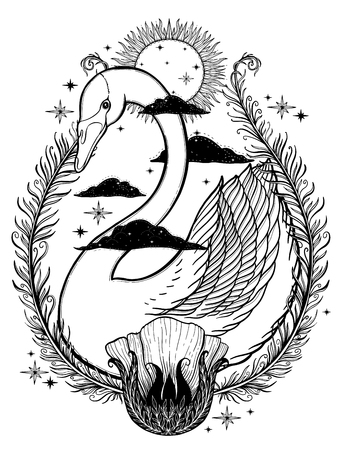1. Introduction to Snakes in Dreams: A British Perspective
Dreams have long fascinated people across cultures, and the appearance of snakes within them is a particularly intriguing phenomenon. In Britain, the prevalence of snakes in dreams holds a unique significance, shaped by centuries of folklore, local wildlife, and evolving superstitions. Unlike some countries where serpents are more common in daily life, Britains native snake population is limited, rendering their dream appearances all the more striking and symbolically charged. This intersection between rarity in reality and frequency in dreams has fostered a rich tapestry of interpretations that permeate British storytelling, rural legends, and modern psychological analysis. From whispered tales on windswept moors to nuanced references in classic literature, snakes in dreams invite both curiosity and caution among the British public. This article delves into how these slithering figures have come to occupy such a prominent place in the British cultural imagination, setting the stage for a deeper exploration into their symbolic meanings and contemporary relevance.
2. Historical Symbolism of Snakes in British Folklore
Throughout the history of the British Isles, snakes have occupied a complex and often contradictory place within the national imagination. Unlike the reverence for serpents seen in some ancient cultures, British folklore has typically associated snakes with caution, transformation, and occasionally malice. This multifaceted symbolism is rooted in centuries of myths, legends, and historical narratives that continue to influence modern interpretations—especially when it comes to dreaming about snakes.
Snakes in Ancient British Myths
The earliest references to snakes in Britain can be traced back to Celtic mythology. In these ancient tales, serpents were sometimes seen as guardians of sacred sites or as symbols of healing and renewal. However, with the arrival of Christianity, the symbolism began to shift towards more negative connotations, reflecting biblical associations with temptation and evil. The transition from pagan reverence to Christian suspicion is a pivotal factor shaping contemporary superstitions around snakes.
Legendary Creatures: The ‘Wyrm’ and Other Serpent Beasts
One of the most enduring figures in British legend is the ‘wyrm’—a giant serpent or dragon-like creature often portrayed as a menace to local communities. Famous stories like the Lambton Worm and the Laidly Worm illustrate how serpentine creatures became metaphors for chaos or moral testing. These tales were not merely entertainment; they served as social warnings and reinforced community values through allegory.
Comparative Table: Snake Symbolism Across Key British Narratives
| Myth/Legend | Symbolic Role of Snake | Cultural Message |
|---|---|---|
| Lambton Worm | Menace/Curse | Consequences of irresponsibility; redemption through courage |
| Laidly Worm of Spindleston Heugh | Transformation/Punishment | The power of love and loyalty; overcoming adversity |
| Celtic Healing Stones (Serpent Stones) | Healing/Protection | The duality of danger and remedy in nature |
| Biblical Influence (Eden’s Serpent) | Temptation/Evil | Moral vigilance; wariness of deception |
Superstitions and Rural Beliefs
In rural England and Scotland, traditional superstitions about adders—the UK’s only native venomous snake—persisted well into the twentieth century. For example, seeing an adder was believed by some to foretell bad luck or betrayal, while others thought killing one would bring misfortune upon a household. Such beliefs reveal a lingering ambivalence: snakes are both feared and respected as part of Britain’s natural heritage.
The Evolution Toward Modern Interpretation
This rich tapestry of mythological and folkloric reference provides essential context for interpreting dreams involving snakes today. Whether perceived as omens, catalysts for personal growth, or remnants of ancestral caution, these historical layers inform both popular superstition and psychological analysis within contemporary British culture.

3. Superstitions and Common Beliefs about Snakes in the UK
Across the British Isles, snakes have long occupied a curious space within the landscape of folk belief, embodying both fear and fascination. Traditionally, snakes are not native in great numbers—apart from the adder, Britain’s only venomous species—but their symbolic presence is deeply rooted in rural lore and everyday language. A common superstition holds that encountering a snake on one’s path foretells an unexpected change or twist of fate, echoing ancient beliefs that snakes were guardians of thresholds and transitions.
Within various regions, omens associated with snakes differ subtly. In some parts of England, seeing a snake before breakfast was once thought to guarantee good luck for the day, while in Scotland, the appearance of a snake could signify the approach of rain or unsettled weather. There are also warnings: an adder crossing your path was sometimes interpreted as a sign to turn back from a journey, lest misfortune follow. These sayings were often passed down through generations, woven into local dialects and seasonal rhythms.
The language itself reflects these attitudes. Phrases like “snake in the grass” originated in Britain to describe someone who is treacherous or deceitful, demonstrating how deeply serpentine imagery has permeated cultural consciousness. Meanwhile, children’s rhymes such as “If you want to live and thrive, let a snake go alive,” advocate for respect rather than harm towards these creatures, revealing an underlying message of coexistence. Collectively, these beliefs paint a nuanced portrait of snakes within British culture—simultaneously respected, feared, and mythologised.
4. Interpretations of Snake Dreams in Modern Britain
Within contemporary Britain, the interpretation of snake dreams has evolved from purely superstitious beliefs to a blend of cultural tradition and modern psychological understanding. Today, Britons often approach such dreams with a pragmatic mindset, seeking meaning through both personal context and established psychological theories.
Prevalent Themes in British Snake Dream Interpretation
Modern Britons typically encounter several recurring themes when interpreting snake dreams. These themes reflect a shift away from medieval or overtly mystical readings, focusing instead on internal emotions, personal challenges, and environmental factors. The table below outlines some of the most common interpretations found in the UK today:
| Theme | Common Interpretation |
|---|---|
| Betrayal or Deceit | Snakes are frequently associated with feelings of mistrust, hinting at underlying anxieties about betrayal in ones social or professional circles. |
| Transformation | The shedding of a snakes skin is often linked to personal growth, renewal, or significant life changes, resonating with those experiencing transitions. |
| Hidden Threats | A snake appearing unexpectedly can symbolise unseen dangers or unresolved issues lurking beneath the surface. |
| Sexuality and Desire | Echoing Freudian analysis, snakes may represent repressed desires or sexual awakening, though this view is less dominant than in continental Europe. |
Psychological Perspectives: British Context
The influence of psychology—particularly the works of Freud and Jung—has permeated British interpretations of dream symbolism. However, British analysts tend to apply these frameworks with characteristic scepticism and an emphasis on individual circumstance rather than universal archetypes. For example:
- Freudian Theory: While Sigmund Freud’s ideas about snakes as phallic symbols are acknowledged, many Britons interpret such imagery in broader terms related to anxiety or vulnerability.
- Jungian Approach: Carl Jung’s concept of snakes as manifestations of the unconscious mind resonates with those who see their dreams as opportunities for self-reflection rather than prophecy.
Cultural Influences and Modern Superstitions
Despite increasing secularism, elements of traditional superstition persist in rural areas and among older generations. For instance, encountering a white snake in a dream might still be viewed as an omen—either fortunate or ominous—depending on family lore. Urban dwellers are more likely to seek rational explanations or consult online dream dictionaries that synthesise folklore and modern psychology.
Summary Table: Traditional vs Modern Interpretations
| Interpretation Style | Main Characteristics |
|---|---|
| Traditional (Superstition) | Omens, prophecies, inherited family beliefs; often regionally specific. |
| Modern (Psychological/Cultural) | Focus on emotions, personal circumstances, self-discovery; incorporates scientific and therapeutic perspectives. |
This blending of old and new creates a uniquely British approach to snake dream interpretation—one that values introspection but remains ever mindful of cultural heritage and prevailing attitudes towards symbolism.
5. Snakes in Language and Everyday British Expressions
When examining the role of snakes in British culture, it is impossible to ignore the linguistic landscape—how idioms, phrases, and slang involving snakes reveal deeper societal attitudes. The use of snake-related expressions in British English is both extensive and telling, providing a linguistic mirror to underlying beliefs and superstitions.
Common British Idioms Involving Snakes
Several idioms featuring snakes are frequently used across the UK. For instance, the phrase “a snake in the grass” refers to someone who is secretly deceitful or treacherous. Its origin can be traced back to classical literature but has long held a place in British vernacular as a warning against hidden danger or betrayal. Similarly, the term “to snake one’s way” means to move stealthily or cunningly, reinforcing associations with slyness and unpredictability.
Slang and Everyday Usage
Modern British slang sometimes shortens the association even further; calling someone simply “a snake” is a clear-cut accusation of disloyalty or duplicity. In schoolyards and offices alike, this label carries significant weight, demonstrating how ancient symbolism persists even among younger generations.
Cultural Implications
The prevalence of these expressions reflects broader cultural meanings. The negative connotations often attached to snakes—such as untrustworthiness and danger—echo traditional superstitions and symbolic interpretations seen elsewhere in British folklore and dream analysis. Language thus becomes a vessel for transmitting cultural values, embedding cautionary tales about trust and betrayal into daily conversation.
In sum, British idioms and slang concerning snakes do more than colour everyday speech—they serve as a linguistic extension of national attitudes towards trust, secrecy, and morality. This intertwining of language with superstition deepens our understanding of why snake imagery remains so potent in both dreams and waking life throughout Britain.
6. Comparing the British Experience: Regional and Social Variations
Within the United Kingdom, the symbolism and superstitions surrounding snakes in dreams are not monolithic; rather, they reflect a fascinating tapestry of regional folklore and diverse social perspectives. While serpents are relatively rare in the British landscape, their symbolic presence in dreams is shaped by historical, geographical, and class-based distinctions.
Regional Nuances in Snake Symbolism
The influence of local folklore is particularly evident in rural areas such as Cornwall or the Scottish Highlands, where ancient Celtic traditions linger. In these regions, dreaming of snakes can be interpreted through the lens of old myths—sometimes as omens of transformation, at other times as warnings of betrayal or misfortune. Conversely, in more urbanised settings like London or Manchester, interpretations often lean towards psychological readings influenced by contemporary culture, with less emphasis on superstitious origins.
England: Caution and Practicality
English interpretations frequently stress caution and pragmatism. Here, snake dreams might be seen as subconscious signals to beware of deceit within ones social circle—a perspective perhaps influenced by the enduring legacy of mediaeval allegory and literature. The lack of venomous native species also means that fear associated with snakes is more symbolic than literal.
Scotland and Wales: Mythic Resonance
In Scotland and Wales, where Celtic legends have a stronger hold, snakes in dreams may represent ancient spirits or guardians. Some communities still recall tales where serpents symbolise healing or wisdom—a nod to Druidic lore—while others cling to Christian-influenced interpretations associating snakes with temptation or evil.
Social Class and Educational Influence
The British class system subtly colours dream interpretation as well. Among working-class groups, folk beliefs and superstitions are sometimes more pronounced, with snake dreams occasionally viewed as portents of luck—good or bad—depending on context. Meanwhile, middle- and upper-class individuals may approach such dreams through a psychological or even sceptical lens, drawing on education and exposure to Freudian or Jungian analysis.
Cultural Exchange and Modernisation
Increasing multiculturalism across Britain has introduced additional layers of meaning. For example, South Asian or Caribbean communities may bring their own symbolic associations with snakes into the wider British dreamscape, further diversifying interpretations. As modern Britain becomes ever more interconnected, these regional and social variations continue to evolve—making the study of snake symbolism in dreams an ongoing reflection of both tradition and change.
7. Conclusion: The Modern Relevance of Snakes in British Dream Interpretation
In the context of British identity, the symbolism and interpretation of snakes in dreams have demonstrated remarkable resilience and adaptability. While traditional superstitions once coloured snake dreams with fear and caution, today’s Britons engage with these symbols through a more nuanced and personal lens. Modern dream analysis in the UK often blends psychological insights with a nod to cultural heritage, allowing individuals to explore both subconscious anxieties and collective myths.
This evolution reflects wider changes within British society—where respect for history coexists with an openness to reinterpretation. For some, snakes remain harbingers of warning or transformation, echoing age-old folklore. For others, they are simply intriguing elements within a tapestry of dreams, prompting reflection rather than superstition. As attitudes towards mental health shift, many now see dream analysis as a tool for self-understanding rather than prophecy.
Ultimately, the continued significance of snake dreams lies in their ability to adapt to the times. Whether viewed as omens from Celtic legend, metaphors for personal growth, or subjects of light-hearted pub conversation, snakes in dreams persist as a potent symbol within the British psyche. This blend of tradition and modern interpretation ensures that the serpent’s presence in our collective nocturnal imagination remains both relevant and uniquely British.


